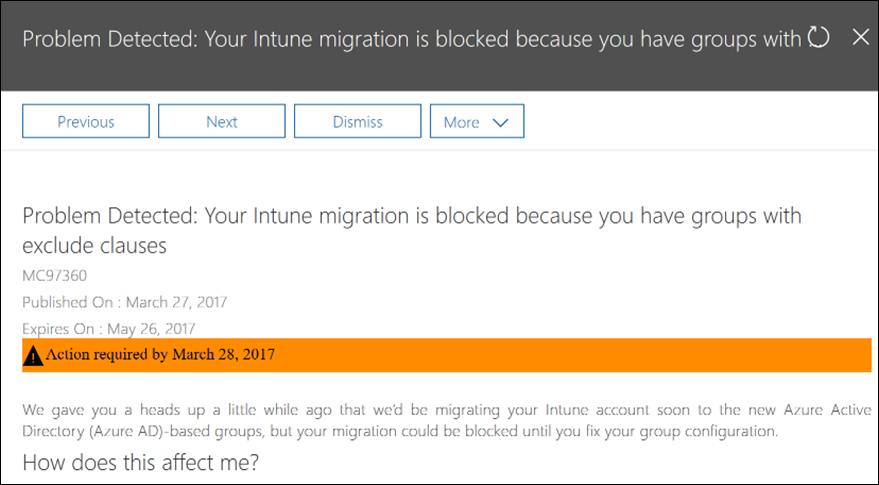Intune on Azure Migration Blocker Guidance
A couple of months back, the Intune Support team posted a list of technical blockers that may result in a delay for your Intune tenant to be migrated to the Intune on Azure portal.
The blog post has been very popular, as many customers were not aware of configuration issues causing delays in migration.
We’ve also been notifying individual customers of configuration changes required to unblock their migration via the Office 365 Message Center 
To help customers resolve these issues and unblock their migration, I’ve posted seven technical guides for resolving migration blockers.
It’s important to note that these guides are intended to explain how a migration blocker occurs, and how to remove the blocking issue. The guides are not intended to provide guidance on how to redesign your grouping/targeting to achieve functionality caused by the blocking configuration.
I suggest you thoroughly review your grouping/targeting strategy before making any changes.
1. Deployments to Ungrouped Users and Devices: Fix Your Intune Migration Configuration Issues 2. Exclusion Clauses in Groups: Fix Your Intune Migration Configuration Issues 3. Nested Groups: Fix Your Intune Migration Configuration Issues 4. The Is Manager Clause: Fix Your Intune Migration Configuration Issues 5. Conflicting App Deployment Rules: Fix Your Intune Migration Configuration Issues 6. Upgrade Your Exchange Connector For Intune: Fix Your Intune Migration Configuration Issues 7. Enable Self-Service Group Management: Fix Your Intune Migration Configuration Issues
We hope you find these guides useful and enjoy the Intune on Azure experience once migrated.
Matt Shadbolt
Senior Service Engineer
Enterprise Client and Mobility – Intune